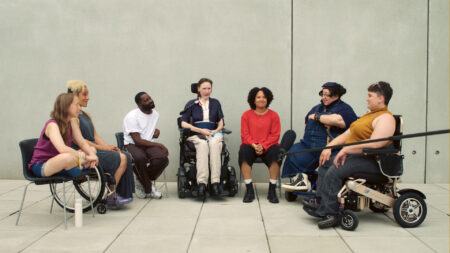
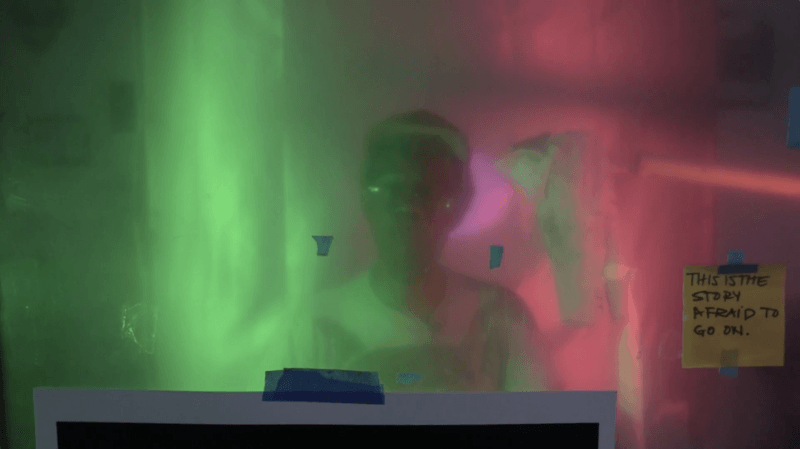
In the Studio
‘The Friendliest Black Artist in America,’ Pope.L discusses humor, management, and performance.
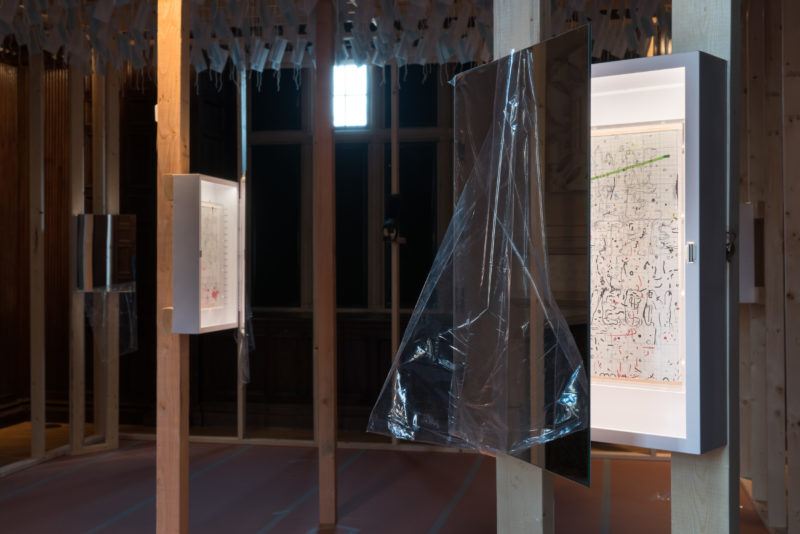
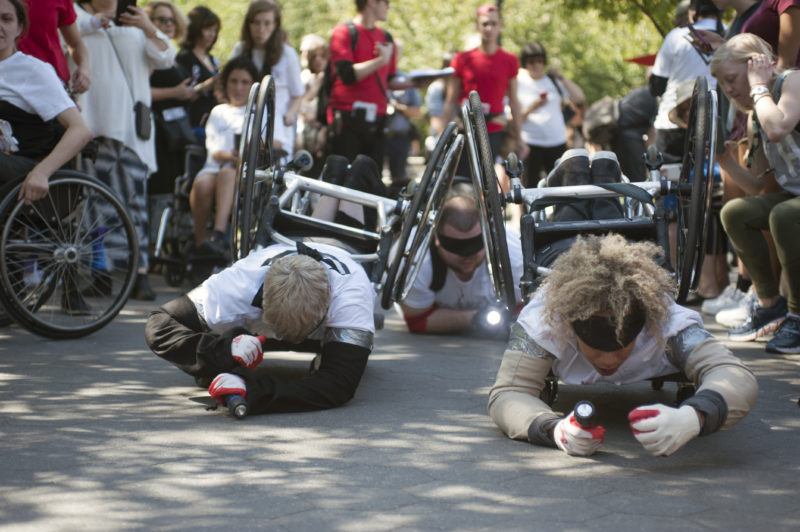
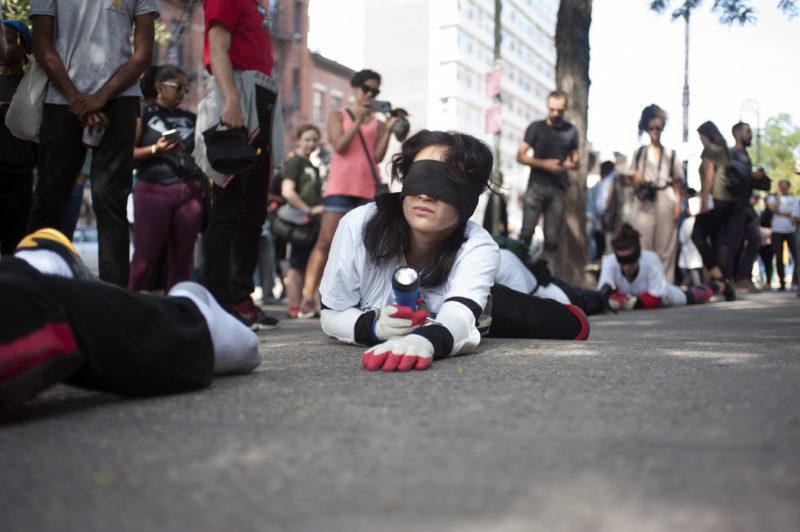
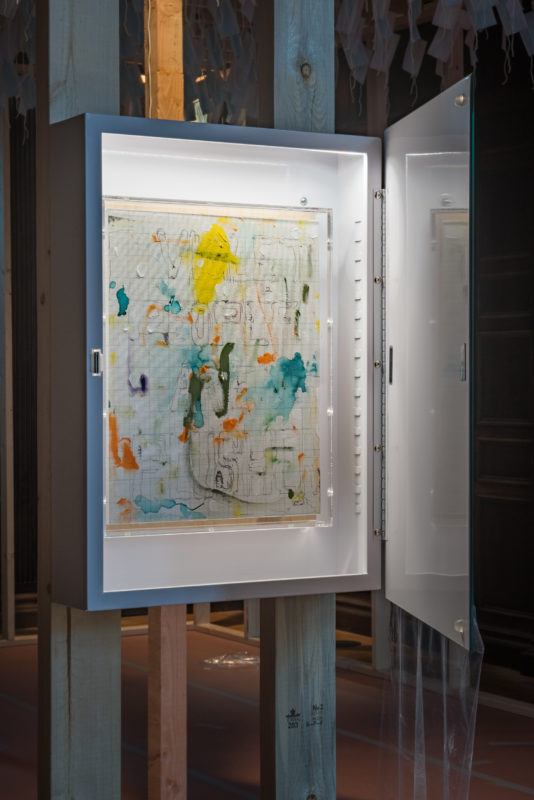
All answers provided by Pope.L are formatted as directed by the artist.
Jurrell Lewis – Could you speak about what it means to be The Friendliest Black Artist in America? How does it function in relation to your work as an artist?
Pope.L – CALLING MYSELF ‘THE FRIENDLIEST BLACK ARTIST IN AMERICA’ WAS A WAY OF MAKING FUN OF MYSELF AND THE NOTION THAT BLACK MEN ARE NATURALLY TOXIC. THE SELF-NAMING WAS A CRIT OF A CATCH 22–IF YOU ARE PERCEIVED AS AN DANGEROUS BLACKMAN THEN YOU’RE RADICAL, IF YOU ARE NOT THEN YOU ARE A PERCEIVED AS TRAITOR. SURE I CAN BE GRUMPY AT TIMES BUT DANGEROUS? I ALSO MEANT IT IN THE WAY THAT NATIONS MEAN IT WHEN, FOR EXAMPLE, YOU HEAR THE PHRASE: “THE UNITED STATES HAS ESTABLISHED FRIENDLY RELATIONS WITH NORTH KOREA.” DOES THIS MEAN THEY’LL GO BOWLING TOGETHER? SEE THEIR KIDS TOGETHER ON WEEKENDS?
What draws you to humor and directness as modes of address in your work?
I AM DRAWN TO HUMOR BY ITS WAFT, ITS SCENT, IT’S INTOXICATION. ITS WET, ITS GASEOUS CRITICALITY. A LOT OF CONTEMPORARY ART IS VERY DRY AND FLAT AFFECT-WISE, WIT AND GUFFAW ADDS DEPTH WHERE VISUALLY OR CONCEPTUALLY THERE WAS NONE. FOR ME, IF THE HUMOR IS TO WORK IT HAS TO BE FUNNY FOR ME FIRST, THEN GOD KNOWS WHAT IT MIGHT BE FOR OTHERS SECOND. I AM LAUGHING AT POWER, PRIVILEGE, LACK, DEATH, HUMOR–I AM LAUGHING AT MYSELF MOSTLY. WOW, I AM VERY FUNNY. I AM MY WORST CRITIC AND MY BEST AUDIENCE.
Is there a typical day in the studio for you? If so, what does that look like?
I HAVE NOT ALWAYS HAD A STUDIO LIKE I DO NOW. I STILL FIND IT STRANGE THAT I HAVE HAD A STUDIO NOW FOR 30 YEARS. KOOKY. FOR A LONG TIME I REJECTED THE NEED FOR A STUDIO. BUT IF I LOOK BACK AND HONESTLY CRIT, EVEN IF I DID NOT HAVE A PHYSICAL SPACE, I CREATED A STUDIO, AS IT WERE, IN A NOTEBOOK OR A BACKPACK.THE STUDIO FOR ME, NOW AND THEN, HAS ALWAYS BEEN A PLATFORM FROM WHICH TO MAKE THINGS HAPPEN. SOMETIMES I DO NOT GO THERE FOR SEVERAL DAYS. ALWAYS BEING IN THE STUDIO IS NOT NECESSARY. MY ASSISTANTS SPEND MORE TIME THERE THAN I DO.
How do figures, objects, and gestures develop across performances in your work? How did you manage the shift away from a singular figure in Crawl to 140 volunteers in Conquest?
AHH, SO YOU SAY–FIGURES, GESTURES AND OBJECTS–AN INTERESTING BUNDLE. IN PERFORMANCE THEY CAN SEEM SAME. OR BE PERCEIVED AS SAME. HOW CRITICAL IS THE DISTINCTION? FROM THE GET-GO I KNEW THE CRAWLS NEEDED TO BE PERFORMED BY MORE THAN ONE PERSON. IT WAS THE 70S IN NYC, AND AS FAR AS THE EYE COULD SEE, IN CERTAIN PARTS OF THE CITY BODIES LYING ON SIDEWALKS. BUT AT THE TIME, I ONLY HAD MY WILL AND IGNORANCE TO GO ON—SO FOR A WHILE I HAD TO PERFORM THE CRAWLS SOLO.
What drives you to put together a performance like Cage Unrequited, with nearly 200 different performers? Did the experience change your understanding of the text performed in the piece, John Cage’s Silence?
HMMM. I WAS ALSO A PERFORMER IN UNREQUITED, AND I HAD MY KID WITH ME. I WAS ALSO A GUEST, AN AUDIENCE MEMBER–SO I HAD MULTIPLE POVs. WHEN I CREATED UNREQUITED I THOUGHT IT WAS ABOUT JOHN CAGE OR HIS PRACTICE OR SOME OTHER NONSENSE–WHAT IT WAS REALLY ABOUT WAS THE IMPOSSIBILITY OF ABSENTING ONESELF FROM A WORK ONE MAKES—AND HOW IRRITATING AND FASCINATING CAGE FOUND THE WHOLE THING–OR AS MY GRANDMOTHER WOULD SAY, IT FOUND HIM–
Your work often engages with common objects that frequently have apparent symbolism in American culture; the American flag, the Wall Street Journal, the Superman suit. What draws you to these materials and how do you manage the expectations built by an audience’s experiences with these objects?
MANAGE?
HMMM.
MANAGE…
MANAGE!?
MANHANDLE?
In an interview with Dieter Roelstraete you spoke of “texts that are ‘thinged’ into being,” could you expand on the process of being “thinged?”
I THINK TO MANAGE IS TO THING. FAIL AS WE MIGHT PEOPLE USUALLY CODIFY THE EDGES OF AN OBJECT OR EVENT IN ORDER TO UNDERSTAND IT, ESPECIALLY THINGS AS WROUGHT AS EXPECTATIONS. BUT THE RELATE OF THE IMMATERIAL TO MATERIAL IS NECESSARILY WOBBLY AND PUDDING-LIKE SO THINGING IS ALWAYS A LACK.
